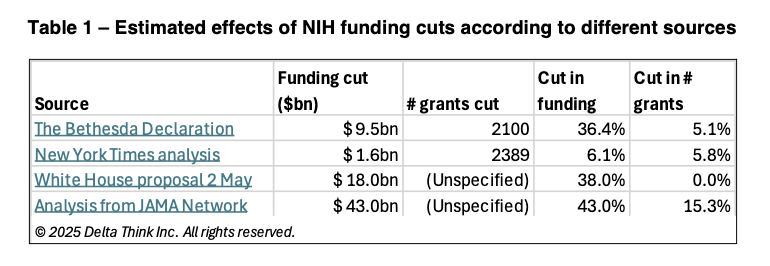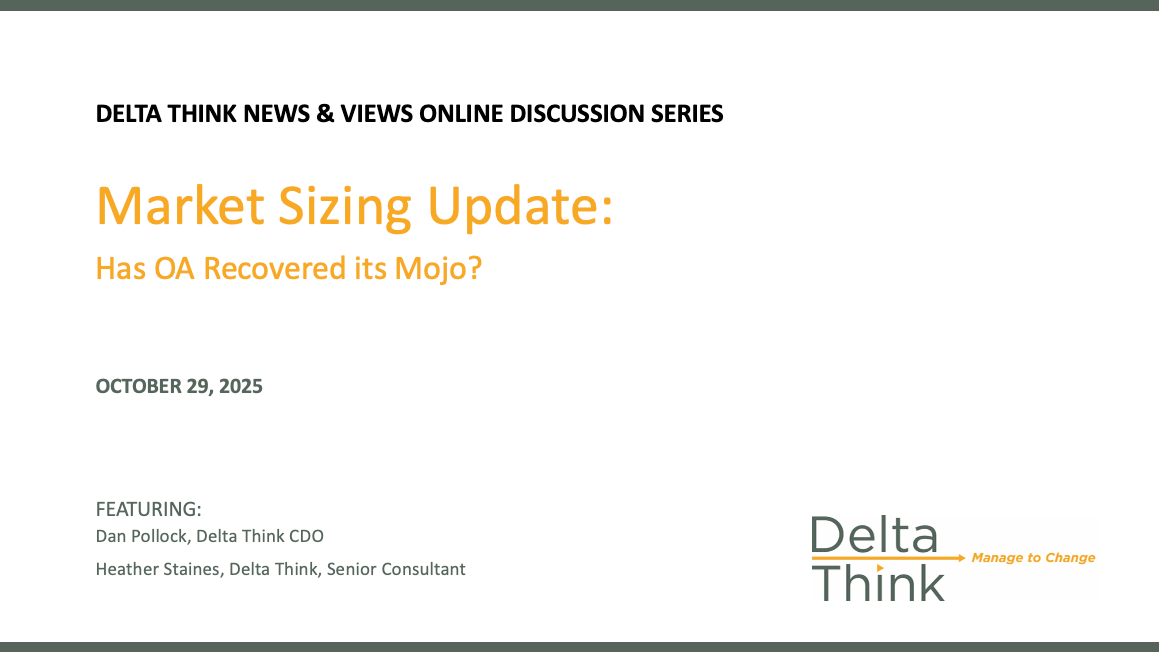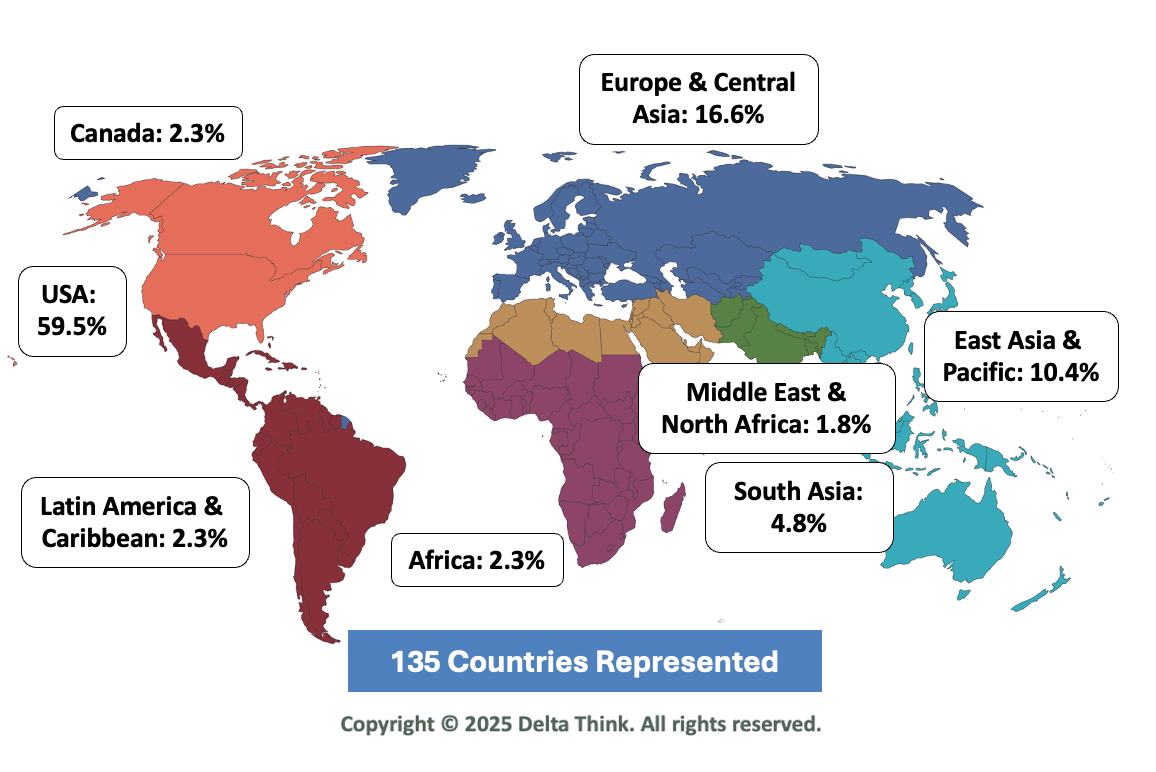News & Views: How much will cuts to NIH funding affect scholarly publishing activity?

Overview
As the extent of proposed cuts to the US Government’s funding of US Federal research becomes apparent, we ask how this might affect scholarly publishers. US bodies such as the National Institutes of Health (NIH) produce significant volumes of research. A fall in their funding could lead to significant drops in research and may have negative implications for scholarly publishers around the world.
Background
The NIH is the world’s largest funder of biomedical research. We have previously noted that the NIH accounts for a significant share of papers published.
At the time of writing (early June 2025), some notable reports about cuts to NIH funding have emerged:
- An open letter (“The Bethesda Declaration”) dated June 9, 2025, to the current head of the NIH, in which signatories (who are NIH staff) note that: Since January 20, 2025, the NIH has “terminated 2,100 research grants totaling around $9.5 billion and an additional $2.6 billion in contracts through end of April”.
- An analysis published by the New York Times in early June 2025 of the grants ended or delayed: From the January 20 Inauguration through April 2025, the administration ended 1,389 awards and delayed sending funding to more than 1,000 additional projects. The agency awarded $1.6 billion (20%) less compared with the same period last year.
- A proposal from the White House dated May 2, 2025, reduces the CDC’s budget by $3.6 billion and the NIH’s total budget by about $18 billion (a cut of almost 40%, according to the NYT).
- Analysis from JAMA Network notes that Congress proposed cuts of 43% to NIH, or $20bn per year. “Assuming that some efficiencies are possible … a 40% cut in NIH spending will translate into a smaller change in effective distributions, we can … estimate that a 33% reduction in NIH funding would be associated with a 15.3% reduction in patents associated with new drugs…”
Could these cuts to NIH funding have a noticeable effect on publication volumes? To answer this, we need to understand how the changes in funding translate into corresponding publication output.
How deep do the cuts go?
The first stage of our analysis puts the reports into the context of the parent funding, so we can estimate the best- and worst-case scenarios of the cuts.

Sources: as stated, NIH (budgets, RePORT, glossary, financial year dates)
We gathered information on total funding and numbers of grants from the NIH’s own data. We then worked out how to compare it like-for-like with the reported or proposed cuts. We could therefore check and estimate the proportions of change the cuts represent, as shown in the table above.
The data suggest a big difference between reductions in funding and the corresponding reductions in the number of research grants. Grants are of different sizes, so cutting funding to larger ones will lead to a disproportionately lower cut in project numbers. We therefore see different effects of cuts depending on whether we measure monetary value or numbers of grants.
What is the effect on publication output?
Taking best- and worst-case ratios from above, we can project these onto scholarly output as follows:

Sources: Delta Think Analysis.
The charts above show ranges of drops in scholarly submissions. We projected cuts onto our previous estimates of the share of output the NIH produces. We then put this in the context of the total output from the US and globally. Given that projects have lead times before publication, we also needed to take a view on when cuts would work their way through to submissions.
- Each bar compares the estimated percentage reductions in submissions compared with numbers at the start of 2025. So, 0% means no change from a nominal steady state.
- The top of each bar shows the best case: Minimum cuts to grants numbers, excluding the FY 2026 proposals, assuming grant numbers pro-rate to submissions.
- The bottom of each bar shows the worst case: Maximum cuts to grant funding, including FY 2026 proposals, assuming funding pro-rates to publications.
- The left-hand chart estimates effects of known cuts in 2025, pro-rated across the average grant length of 3.7 years. The figures suggest a fall in submissions from the US of between 0.7% in 2025 (best case; top of leftmost bar) and 5.1% (worst case; bottom of bar). This would represent falls of between 0.1% and 0.8% in global output (second-left bar).
- The right-hand chart shows the cumulative effects of cuts over the 3.7-year average grant timescale (taking us nominally to mid – late 2029). Here, we see much greater falls: The worst case sees US submissions falling by over 30%, corresponding to a 5% drop in global output.
- For the sake of analysis, we made assumptions about steady output of papers, and that funding or grants (depending on the scenario) scale linearly with submissions. To compare like-for-like, we have assumed no other changes – such as to other areas of the world, to other US institutions, and no further cuts in funding beyond those currently announced.
Conclusion
Given the scale of NIH-funded research, it is no surprise that reductions in its funding could lead to a noticeable reduction in publication output. However, the degree of change depends on the assumptions made. Specifically, it depends on what is taken to be the leading indicator of publications.
If numbers of grants are used, then changes in publication activity are relatively small. Single-digit percent changes could likely be absorbed easily by most publishers.
However, not all grants are created equal. As the cuts to funding are proportionately larger than the cuts to grant numbers, the data suggests that larger grants are bearing the brunt of cuts. As larger grants lead to greater publication output, cuts in funding to larger grants will have profound effects.
Any analysis like this relies on assumptions, which can be argued different ways. For example, submissions may not scale linearly with grants or funding, and published papers may not scale linearly with submissions. (Reports from some of the publicly listed corporate publishers often cite higher rates of submission growth compared with publication growth, for example.) So, drops in publication output may be less than drops in funding. Conversely, cuts to existing projects may have a disproportionate effect on submissions, which are likely to arise towards the end of a project.
The best-case scenarios in our analysis may seem mild, but we caution against false hope. The larger ones, based on funding cuts, are likely a more realistic dynamic. Our estimates only focus on biomedical research. We have not analyzed cuts to the other large US federal research agencies. (At the time of writing, cuts to NSF funding had made headlines. We will produce further analysis into this in due course.) And, government cuts may undermine other philanthropic efforts.
If funding cuts to the NIH are implemented as planned, even allowing for efficiencies, then a 15% - 20% drop in submissions from the US is not beyond the bounds of possibility. Of course, actual effects will vary by publisher. If you want to look into what this means for you, please contact us.
---
This article is © 2025 Delta Think, Inc. It is published under a
Creative Commons Attribution-NonCommercial 4.0 International License. Please do get in touch if you want to use it in other contexts – we’re usually pretty accommodating.
---
TOP HEADLINES
The Open Access Journals Toolkit: new languages, new editorial board members, new horizons – June 5, 2025
"The Toolkit was launched in June 2023 in English and French by DOAJ, OASPA and an international independent board of editors. It is now also available in Arabic, Portuguese and Spanish. Usage of the Toolkit continues to grow and the number of downloads at Zenodo is high. The Editorial Board is reviewing and updating the content. New content is being created."
Big Ten Academic Alliance and Springer Nature Announce First-Ever Unlimited Open Access Publishing Agreement in the Americas – May 29, 2025
"The Big Ten Academic Alliance has signed a two-year Open Publishing Agreement with Springer Nature, making it the publisher’s first truly unlimited and uncapped open access agreement in the Americas. This is the Big Ten Academic Alliance’s fifth Open Publishing Agreement or OPA, and its most expansive to date."
OASPA’s ‘Next 50%’ project: Your Voice Matters at a Critical Moment for Open Access – May 22, 2025
"[OASPA has] now launched our Next 50% project, with a primer document that frames a fresh conversation about the future of open access...This is not something OASPA will do in a vacuum: we are seeking inputs about our primer via an open survey which will accept responses until 11 July."
Oxford University Press: Experimentation, sustainability, and equity: reflecting on 20 years of open access publishing – May 13, 2025
"2025 marks 20 years since we, at OUP, launched our open access (OA) publishing by ‘flipping’ Nucleic Acids Research, one of our biggest journals...Since then, our commitment to open access has remained constant, and we have continually expanded our OA offering. The anniversary gives us a good opportunity to reflect on the progress we’ve made, and think about the exciting initiatives we have ahead of us."
More than 100 institutions and funders confirm recognition of eLife papers, signalling support for open science – May 7, 2025
"More than 100 institutions and funders worldwide have confirmed that research published in eLife continues to be considered in hiring, promotion, and funding decisions, following the journal’s bold move to forgo its Journal Impact Factor. This confirmation offers reassurance to researchers and highlights growing momentum behind fairer, more transparent models of academic publishing and assessment."
OA JOURNAL LAUNCHES
New British Psychological Society journal focuses on future of environmental psychology - June 12, 2025
"The British Psychological Society, in partnership with Wiley, will introduce a new open access journal, called Environmental Psychology Research, publishing exciting updates from a psychological perspective on the complex interactions between human activities and the environment."





News & Views: Will cuts to National Science Foundation funding affect scholarly publishing activity?








